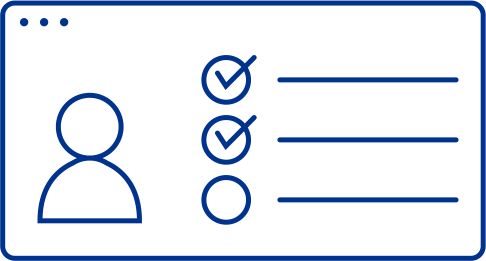The Pay Transparency Act applies to employers in British Columbia (BC) and is designed to address systemic discrimination and to help close the gender pay gap. To achieve this purpose, employers must meet statutory obligations relating to pay history, pay secrecy, employer reprisal and pay transparency.
The first Pay Transparency Reports were due to be filed in November 2023 by the BC Public Service and largest Crown Corporations (for more background on the Act, see British Columbia's New Pay Transparency Act). Following this first year of reporting, in June 2024 the BC Ministry of Finance published its first annual Pay Transparency Report highlighting progress and gaps since the Act came into effect. The key themes from the ministry's 2024 report are summarized below and this article describes the information that employers are required to include in their reports and the new toolkit developed by the ministry to encourage and facilitate reporting in compliance with the Act.
Insights from the ministry's 2024 Pay Transparency Report
The 2024 Pay Transparency report primarily describes the gender pay gap, employer compliance with the Act, reporting requirements, and gender wage discrepancies and trends – noting that compliance with the Act has steadily improved over the past year.
The Act requires selected employers to publish an annual report that contains, inter alia, the differences among prescribed groups of individuals in relation to pay. This disclosure is intended to illustrate whether there are pay gaps within the workforce. Gender pay gap refers to the difference in average earnings of people based on gender.
Pay gaps exist in BC, particularly for racialized women, and there are opportunities for employers to improve their pay practices to reduce these gaps.
Key points from the the ministry's 2024 report:
Data analytics – pay gaps
- In 2022, BC's median gender pay gap was 18 percent, higher than the national average of 16 percent. After the Act was implemented in 2023, the gender pay gap in BC decreased to 17 percent
- There are several factors that could contribute to the improvement of the gender wage gap, such as more women participating in higher-paying, full-time jobs, and moving from lower - to higher-paying positions within certain labor market subsectors
- The largest gender pay gaps were found in the agriculture, forestry, fishing and hunting; professional, scientific and technical services; and manufacturing sectors
- Only in the arts, entertainment and recreation sector did women earn more than men
- Racialized women earned 24 percent less than men, and the gap increased to 29 percent when compared to non-racialized men. Indigenous women's median wages have generally increased since 2017, with a temporary dip during the pandemic.
Compliance with the Act
- Compliance with the posting requirements improved from 2023 to 2024. Job postings in BC featuring pay details increased from 49 percent in the third quarter of 2023 to 76 percent in February 2024
- The first employer reports (filed under the Act in 2023) were transparent about gender pay gaps in their organizations
- The Pay Transparency Unit received and tracked over 500 inquiries, 61 of which were reports of non-compliance. Letters were sent by the Director of Pay Transparency to nine employers reminding them of their obligation to comply with section 2 of the Act, and the Unit will continue to strengthen outreach with employers to drive compliance.
Suggestions for continuous improvement
- The ministry encourages employers to review their findings and consider ways to improve gender data collection methods, extend overtime work to more women and non-binary people, ensure equal opportunities for bonus pay, and examine why women's bonus pay may be lower than men's, and why employees of certain genders may be concentrated in lower pay quartiles.
What's next for employers in British Columbia?
On November 1, 2024, organizations with more than 1,000 employees in BC will be required to file annual reports that identify pay gaps based on gender. The Act applies to all employers in BC, including the private and public sector.
Organizations with fewer than 1,000 employees in BC have reporting deadlines in 2025 and beyond.
| Number of BC employees | Deadline for reporting |
|---|---|
| 1,000 + | November 1, 2024 |
| 300 + | November 1, 2025 |
| 50+ | November 1, 2026 |
To determine the appropriate reporting deadline, organizations should use the number of employees in BC employed as of January 1 of the reporting year.
Employers are required to prepare the report annually, make the reports available upon request, and publish them on an accessible website. The steps required to prepare for reporting are summarized in more detail below, including an overview of the toolkit developed by the ministry to assist employers in meeting their reporting obligations.
What information must be disclosed in an employer's pay gap report?
The Act requires employers to report on salary, hours worked, bonus pay, overtime pay and overtime hours worked, with a comparison based on employee gender. The report must include all employees located in BC, whether they work on-site or remotely within the province.
The pay data in the report includes:
- Salary (ordinary pay), excluding any bonus pay and overtime pay, received in the reporting period
- Number of hours worked that can be attributed to the salary
- Bonus pay received in the reporting period
- Overtime pay received in the reporting period
- Number of overtime hours worked that can be attributed to the overtime pay
- Special salary (such as a lump sum that is not assigned a set number of hours).
The "reporting period" is based on a 12-month period. The employer can elect to use either their most recent financial year before the November 1st deadline, or the previous calendar year.
The pay data is compared across three gender categories: man, woman, or non-binary. There are limits on reporting where a gender category has fewer than 10 employees, recognizing that there are potential issues with privacy when collecting data from smaller employers.
How to compile data for the report
As a first step, employers must ask employees to self-identify in the following gender categories: man, woman, or non-binary. Employees must be notified that the disclosure of information is voluntary and provided with the opportunity to review and change any information previously provided. Any employee choosing not to provide their gender information will be marked as unknown. The collection of gender and other identity data from employees must comply with applicable privacy laws governing how organizations collect, use, and disclose personal information.
The inclusion of non-binary identification is a notable feature of the reporting requirements, which aligns with BC's Gender and Sex Data Standard. Other jurisdictions typically only analyze pay gaps between men and women.1
Next, the employer must compile pay data described above for the purpose of reporting on gaps. This data is compared across each gender category, including mean and median hourly pay, overtime, and bonuses; and the percentage of each gender in each pay quarter (i.e. the lowest paid, lower middle, upper middle, and highest paid).
Tools to enable reporting
To encourage and support employers in preparing reports, the BC government published an online reporting toolkit in June 2024.2
The government toolkit provides a sample spreadsheet to input employee information, including employee gender, hours worked, pay, overtime hours worked, overtime pay, and bonus pay. Once this information is uploaded to the government's online system, a draft report is generated with the necessary calculations to report on pay gaps and rank employees into pay quartiles. Employers are given the option to generate a final report and share it with the BC government if they choose to do so.
The report generated by the government's toolkit simply calculates and reports on the data that is inputted into the spreadsheet. It does not analyze pay gaps or trends within an organization – for example, why gaps exist, and what talent management or compensation practices could be adopted to close those gaps moving forward.
KPMG has developed a Pay Equality Dashboard that offers a more detailed assessment of pay gaps across job levels, diverse identities, and intersectionality. This interactive tool enables users to gain actionable insights by visualizing and investigating their organization's pay data. It is adaptable to multiple jurisdictions and global reporting standards greatly simplifying compliance-related activities. It also facilitates ongoing pay gap analysis across various dimensions, including department, division, management level, and performance as well as identifying pay variances for equity-deserving groups beyond gender, including other protected grounds like, ethnicity, Indigenous status, and ability, considering factors like experience, time in role, and performance. The dashboard serves as a guide for recruiting diverse talent, retention, and enhancing employee engagement.
The impact of pay reporting on talent recruitment and attraction
The talent market in many industries remains competitive. Disclosing pay gap information with an explanation of why gaps exist could impact an employer's ability to attract and recruit the best talent. In addition, reporting on pay gaps could result in questions – and potentially complaints – about the organization's approach to diversity, inclusion, and human rights protection.
Employers who have already developed an equitable compensation strategy in advance of reporting will be better positioned to prepare reports and explain any gender-based gaps. An equitable compensation strategy includes adopting a job evaluation system, where roles are assessed based on responsibilities, skills, efforts and working conditions, and consistent HR processes, such as performance management.
Standardizing pay practices enable employers to identify where pay gaps are based on non-discriminatory practices (such as skills or working conditions), and where more work is needed to reduce bias or discriminatory practices. Having a consistent, transparent and fair job framework not only help employers comply with regulations and achieve their talent strategies, but it eliminates any pay disparities and discrimination, ensuring that employees performing similar work with similar responsibilities are compensated equally.
Conclusion
The pay transparency requirements in BC represent an important shift towards holding organizations accountable for equitable pay practices. The ministry's recent 2024 report indicates that employers in BC are taking steps to comply with the Act, ahead of the reporting requirements that come into effect for more organizations this November.
Employers are encouraged to take a proactive approach to preparing for these changes by implementing formal compensation systems, reviewing their data collection policies, and putting into place pay practices that account for equal pay for work of equal value. These measures not only ensure compliance with the new regulations but also foster a culture of fairness and equality, enhancing employee satisfaction and productivity and positively contributing to the overall success of the organization.
KPMG has a cross-disciplinary legal, HR, and total rewards team that supports our clients in complying with the Act, assessing pay gaps, developing equitable pay practices. For more information, please contact our team members below.
- U.S. Equal Employment Opportunity Commission (EEOC), the UK's Equality Act 2010 (Gender Pay Gap Information) Regulations 2017, Australia's Workplace Gender Equality Act 2012, Canada's Pay Equity Act, and the EU's Recast Directive on Gender Equality all focus on analyzing pay gaps between men and women. None of these jurisdictions explicitly mention the inclusion of third gender options in their pay gap analyses. Germany, India and California have recognized a third or non-binary gender in other context but not in relation to pay gap analyses.
- To use the toolkit, employers must have a Business BCeID account.
Insights and resources
Connect with us
Stay up to date with what matters to you
Gain access to personalized content based on your interests by signing up today
Connect with us
- Find office locations kpmg.findOfficeLocations
- kpmg.emailUs
- Social media @ KPMG kpmg.socialMedia



